Evergreen "Beauty" Thuya is one of the most decorative attractive cultures today. The plant is indispensably at the design of almost any landscape, a garden-park zone or a conventional household plot. Tui landing can form "live" hedges or serve as a bright emphasis among other plants.
Tui varieties and varieties are currently very much, but also plant saplings are not cheap. An alternative method of breeding the coniferous perennial can serve the cultivation of a car from seeds. How to plant the seeds of the Tui and, what care to provide seedlings? How much time will you need to grow a full-fledged cargo seedling? Step-by-step conifercy cultivation instruction in this article.
Tuya from seeds, plant features
- Thuja refers to coniferous plants from the family of cypress. It is a beautiful evergreen shrub or a low tree, which is often also called a "vital tree".
- A representative of gone plants, Thuja, forms the leaves, which first have the kind of soft needles, and with age turn into opposite scales.
- In the fall, in the oblong cones of the Tui ripen flat seeds - winters.
- Thuja is considered unpretentious and hardy culture well adaptable to growing conditions and smoke in urban conditions.
- The rod of the car has 5 species, of which numerous garden forms of Tui Western and Tui folded are the most common.
- A perennial plant is widely used in landscape design, for landscaping gardening zones or household plots. Thuja is cultivated mainly in the open soil, although it is possible to grow it and indoors.
- The culture is characterized by high frost resistance, so the area of \u200b\u200bits distribution is quite wide.
The cultivation of the Tui of seeds is a long, but relatively cheap method of breeding coniferous culture. Consider a step by step process of landing the Tui from seeds and the peculiarities of the plant care at each of the stages.
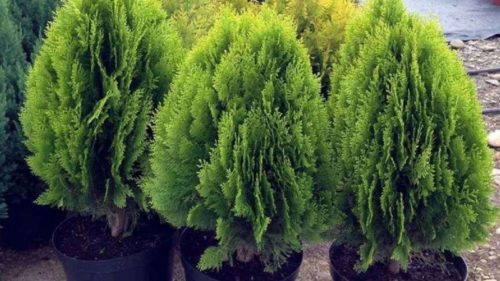
Reproduction of Tui Seeds
The breeding of the Tui with the help of seeds allows to obtain a sufficiently large amount of high-quality, healthy and endless seedlings in a rather short time. Moreover, this process does not require special costs and easily implement at home. The reproduction of Tui seeds is possible for any varieties and plants.
It is important to remember that the reproduction of the plant in the seed method does not guarantee 100% compliance with parental form and some deviations are possible in the appearance of the Tui. As you know, it is possible to fully preserve the varietal signs only with a vegetative method of reproduction.
To determine which varieties inherited a subsidiary, perhaps not earlier than the second year of the vegetation of the seedlings.
How to grow out of seeds? Let's start with the preparatory stage.
Collection and harvesting of Tui seeds
- Tui seeds can be bought in a specialized store or collect independently.
- When is it better to collect the seeds of the Tui? Tui seeds at the end of summer or in the first decade of autumn. It is important to rip the cones until they completely reveal, and the seeds will fall out. On the bump tree it is easy to see the characteristic, brown-brown color.
- If the bumps are badly broken from the tree, they can be separated along with part of the escape on which they grow.
- The columns are placed in a dry, warm and ventilated place for their final aging. In such conditions, the bumps quickly dry and begin to reveal. It is best to decompose them on paper, as the seeds in anticipation are easily poured and may be irretrievably lost.
- As for the temperature regime, the bumps must be in a place where the temperature will not exceed + 6-7 0S. Fit direct sunlight is also not desirable, it is better that it is scattered lighting. Otherwise, the seed material will lose its germination and will be unsuitable for landing.
- In order to collect the overwhelmed seeds, you can slightly knock on the chish and the long-awaited seeds of the Tui will fall on paper.
- What do the Tui seeds look like? The seeds of coniferous culture are small branches of brown.
Photo: "Tui Seeds"
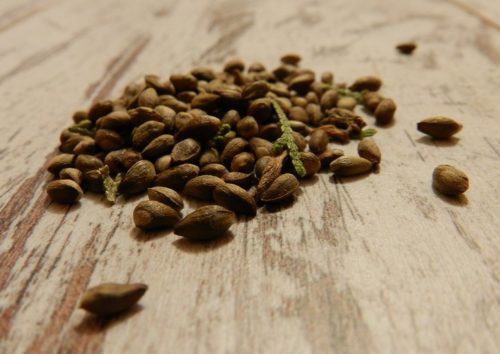
- The collected seeds are recommended to be immediately prepared for landing. Fresh seed material will provide maximum germination. When stored, even short, the coefficient of gentlement decreases sharply.

Time and Place of Sowing Tui Seeds
- For the cultivation of Tui from seeds at home, sowing can be made in autumn or spring.
- The Tui seeds are best airing in autumn (after their collection) in open ground, thereby ensuring their natural stratification. Such crops will subsequently be more enduring and vitial. In addition, the first shoots of the Tui will seem in the spring, will actively develop and grow. Seedlings will easily cope with small frosts or short-term cooling. Spring under winter, seedlings are easier to transfer the first wintering than those that were planted in spring.
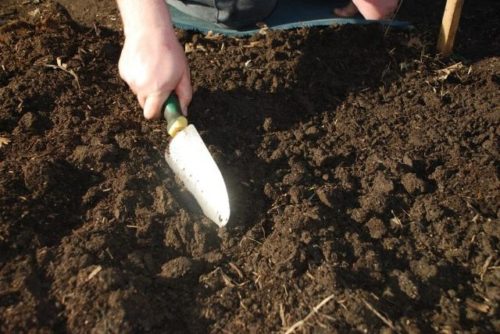
- With spring crops, the seeds must necessarily go through the preliminary procedure for hardening, for example, in a refrigeration chamber (for vegetables). For this, the seeds are placed in a container with wet sand (or sawdust) and leave on the bottom shelf of the refrigerator for several months.
- Some gardeners practice another way of winter challenging seeds: the collected sowing material is collected in a linen bag, which for the winter is buried in the soil (on the street) to a depth of at least 30 cm. From above, this place is sprinkled, for example, foliage.
- After a long (for 3-4 months), the stratification of seeds is seeded into the ground, from February to April, depending on the selected fit method.
- You can land the thuy seeds as immediately in open ground, in bed and in the container with soil mixture. When sowing seeds in open ground, the soil must warm up to +10 0-150WITH.
- With a container planting method, the seeds can calmly soaring in February. At the same time, the shootings of the Tui will have to artificially freeze the luminescent lamp.
Planting Tui Seeds
After the seeds are collected, prepared and passed an important stage of stratification, "there was a turn of their sowing into the ground. How to plant seeds?
- Gardeners engaged in the breeding of Tui from seeds note that it is most convenient for the cultivation of Tui seedlings, use containers. For this, shallow boxes are suitable, which can easily be rearranged in the right place, depending on changes in the conditions of content.
- The optimal option for sowing seeds of the Tui will be containers with a height of about 10-12 cm. You should know that in too deep boxes, unclaimed soil begins to cry, and in too low - the roots will be intertwined, and interfere with each other. In addition, the "confusing" roots of the seedlings will not be able to undergo further pickups without damage.
- When boarding the Tui seed into the container, the mixture is first prepare the mixture. To do this, they mix the turfs, peat and sand in a 1: 1 ratio. You can purchase a ready-made soil substrate intended for coniferous crops.
- A low (2-3 cm) layer of drainage material is placed on the bottom of the container: clamzit, small gravel. From above, the soil substrate puffs up, roll over and slightly seal it. The soil level in the container should not reach the edge of the side, approximately 2-3 cm.
- To disinfect the soil, it is spilled by a concentrated solution of potassium permanganate (manganese) dark pink.
- For successful germination, before planting seeds, it will be necessary to subjected to another procedure - germination.
- How to germinate the Tui seeds? There is nothing easier. Enough to soak them in warm water or wet sand overnight. In the morning, the swollen seeds will be ready to land in the ground.
- In shallow (5-6 mm) grooves located from each other are not closer than 5 cm, seeds seeds. When sowing, it should be tried evenly and not bother to distribute seeds in the grooves.

- The seed seeds are sprinkled with a thin layer (no more than 1 cm) of the soil. The surface is slightly compacted (for this you can use a plate) and moisturized from the sprayer.
- Before the emergence of the first germs, the container is left in a warm room (with a temperature not lower than 20 ° C). For better germination of seeds, the container is covered with glass or film, creating a fact-favorable, wet and warm microclimate.
- After seeding, the first shoots appear usually after 20-25 days. The film or glass is cleaned when seedlings are slightly growing and fixed.
Photo: "Tui seeds ride"

- At first, the seedlings are not much like an adult plant of the Tui, but, over time, gentle needles will turn into characteristic scales as in an adult culture.
- The seeding procedure in open ground is practically no different from the above, container, planting method.
Care for young seedlings
- Regardless of whether the seeds of the Tui are planted into the container or a bed, care for seedlings will be approximately the same.
- Watering is carried out carefully so that the soil is not washed. It is best for this purpose to use a finely dispersed pulverizer. If the seeds after irrigation still "denied", they are sprinkled with a thin layer of soil. Watering seedlings should be moderately, as the soil is drying, not allowing both moisture and dryness.
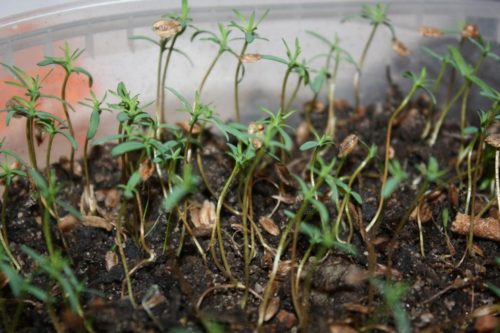
- During the emergence of germs, provided that established warm weather, the container with seedlings can be placed on the street, in the shade, without directly entering young plants of sunlight. Perfectly suitable, for example, place under the protective crown of trees. The optimal summer temperature for tender sprouts should vary in the range + 17-23 oS. Young coniferous cultures are dangerous bright scorching sun, causing, often, sunburn plants. Therefore, seedlings landed for a garden, first time it is better to cover with any observer material.
- To stimulate the growth of plants, seedlings provide regular (every 2 weeks) feeding. Mineral complexes containing nitrogen, potassium and phosphorus are best suitable as fertilizers. Gardeners also often use such combined fertilizers such as "agricults" or "solution", which, along with designated elements, contain a number of additional nutrient trace elements. Using the above drugs, seedlings will sufficiently use half the dose indicated on the packaging for adult plants.
- To protect the plant from possible fungal diseases, the shooters of the thuy are treated with a fungicidal preparation, for example, foundazole.
- During the first season after sowing, seedlings grow at 8-10 cm in height. Seedlings lined in the container are in winter in the same boxes. For the winter, containers leave indoors with a temperature of about + 14-18 0S. Sowing in the open soil prepare for winter, mulching a peat area with fallen leaves or straw.
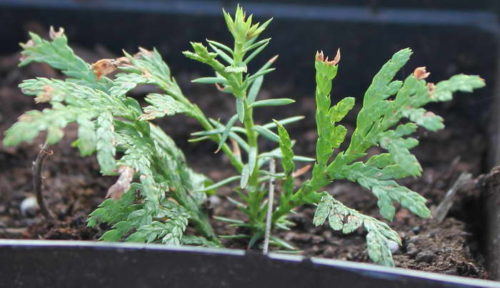
Tui seed transplant
- After the first wintering, the grown seedlings of the Tui transplanted into the open ground (shovel) to grow. The plant moves well to the resetting procedure and quickly coming up in a new place.
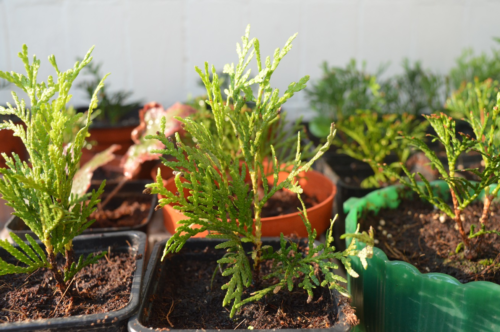
- Crickerel for seedlings are chosen in a half. The soil on the plot should be nutritious, light and loose. To do this, the organic (humid, wood ash) is added to the soil and, in the case of a scarce composition of the soil, a complex triple mineral fertilizer "Nitroposka". The site is dripping and roll up with robbles.
- The correct landing of the seedlings implies the placement of the root neck of the plant at the soil level. Blowing cervix can provoke the hearing and death of the plant.
- With mass landings of the Tui, the seedlings plant on the bed with rows, with an interval between plants about 30 cm. The distance in the aisle should also be at least 30 cm.
- After planting young seedlings to the garden, the plant is watered, and the rolling circle is mounted peat.
- If the seedlings of the Tui in the container is not thickened, and the seedlings are enough space for development and growth - you can do the same year without a transplantation to the shut-off. It will be enough to plunge the ground into the container, and provide proper care to seedlings.
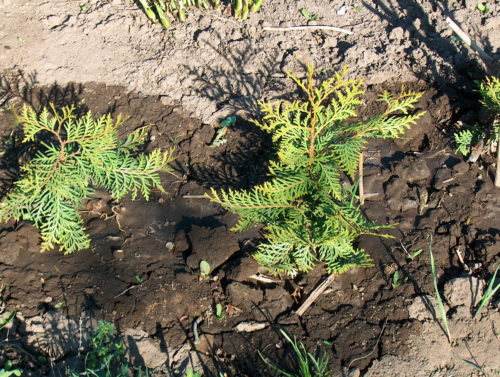
Care for grown tui seeds
- Care behind the seedlings of the Tui is regular irrigation, soil loans, making feeding and removing weed grass.
- Watering is important to carry out regularly, but moderately, without stagnation of water or the formation of a dry cracked crust of the Earth.
- Fertilizers can be made once a month. It is best to use balanced mineral complexes.
- The average annual increase in the intended cargo seedlings is about 30 cm.
- For the winter, the container with seedlings is removed into the room. If the young Saplings of the Tui were in the garden, the landing for the winter is insulated (fastening the fallen leaves, noodle or shelter with nonwoven material).
Planting a car from seeds to a permanent place
At a permanent place, it is planted after about 3 years of age, when the plant reaches half-meter height.
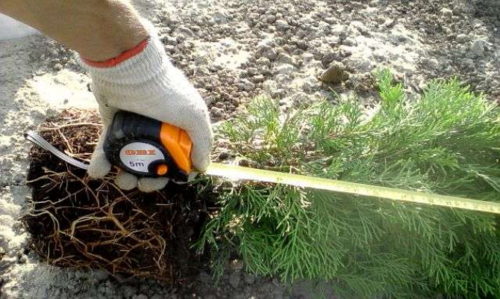
- Place for planting plants should be chosen solar and open, but without strong drafts and gusty winds. The sapling, designed in the shade, will lose its decorative properties: the crown it will be rare, the needles turn yellow and crumble. It is also allowed to landing the car into a light openwork half.
- Soil on the plot where the Tui landing is planned, should be light, with a weak-eyed medium reaction. The optimal version is soverees with the addition of the turf.
- The landing scheme of the Tui seedlings depends on the designer design of the gardener and can be from 1 to 3 meters between the plants. If the seedlings are planted with the aim of forming a "alive" hedge, the distance between the trees is not allowed (for example, 1 meter). The distance between the trees also depends on the Tui variety, since a spherical or spreading form will need much more space than a compact pyramidal variety of the Tui.
- The size of the landing pits will be directly dependent on the size of the root system (earth coma) seedlings.
- At the bottom of the landing pit, the drainage layer is stacked, after which a small earthy hall is formed, which is directly exposed to a seedling of Tui. Drainage performs an important function, not allowing in the future unwanted for the Tui, the stagnation of moisture.
- The root cervix of the Tui seedling when landing should remain at the ground level. The better the natural earthen car seedling will continue when landing, the more successful will be the obscurity of coniferous culture in a new place.
- After landing, the young tree can temporarily "get tidy", adapting to new habitat conditions.
Tui from seeds - care for an adult plant
- Adult thuua perfectly tolerate trimming, so regular "haircut" of its shoots allows you to create the crown of the desired form and configuration.
- For the first time after planting, the plant needs more frequent and abundant watering. The average rate of irrigation will be 1-2 times a week, depending on weather conditions. At a time under one tree was poured into about 1 bucket of water. Subsequently, adult fifth watered only on a very hot and dry season. Responds favorably coniferous culture and crown irrigation.
- After watering, the soil around the plant to be shallow (10 cm) to loosen. With the emergence of weeds, it is removed.
- Good agricultural practices is mulching around-trunk circle. Mulch retains moisture better and retards the growth of weeds.
- If Thuja grown indoors, it should periodically rotate the pot so that the plant received a uniform illumination and to develop a "lopsided". Ideal for room arborvitae - ephedra room for the summer in the garden.
- Do not forget about feeding arborvitae in the first two years after planting plants on a permanent place. Organic fertilizer suitable humus and charcoal, mineral - any complexes, intended for coniferous plants.
- With regard to the pests, thuja may be affected by such parasites as aphids, Coccidae and zygaenidae mole. Thus Coccidae causes the formation of yellow spots on the plant, moth provokes blackening and dieback and aphids needles leads to fall off. Insecticides used folk remedies (broth peel onions, soap solution) and chemical insecticides ( "aktellik", "Malathion", "Decis").
- It is also possible disease Tui fungus that infects most often young shoots. If the branches of the plants appear characteristic of fungus stains - should be cut all the affected areas, and the plant to handle any anti-fungal drug.
- Fall, fifth prepare for winter. For this purpose plant cover lapnikom twine or wrapped with branches with subsequent warming any nonwoven.
Popular varieties of arborvitae
Tui for growing from seed, you can use any variety of plants. The most popular for home cultivation are the following varieties of arborvitae west:
- Thuja "Danica" refers to dwarf varieties, has a layered reddish bark and needles of saturated soft shiny, dark green.
- Thuja "Emerald" is a tapered and slightly branched shrub that grows no more than 2 meters. Glossy dark green needles.
- Thuja "Woodworth" - a dwarf ball-shaped grade, a height of no more than 2.5 m. Saving straight and flat, needles of dark green color.
- Thuja "Ericidez" looks very decorative and attractive. This is a miniature shrub with a spherical or wide cone-shaped crown. In height, the plant reaches approximately 1.5 m. The shoots are weakwell, thin, long. The needles are painted in light green tones, biting a beautiful golden shade in autumn.
- Thuja "Philoxy" is an original hearer type of Tui, an externally resembling juniper. Flexible shoots, soft, two-color needles.
- Tuya "Zebrina" has a cone shape and reaches a height of no more than 2.5 m. The coniferous color color: bright green with light yellow streaks.
- Thuja "Rugged" is a fast-growing variety capable of reaching in an adult to 3 meters. The needles of green, with yellowish tips.
- Thuja "Vipcord" - an unusual dwarf grade of the thuly with diluting, cordless, non-branching shoots.
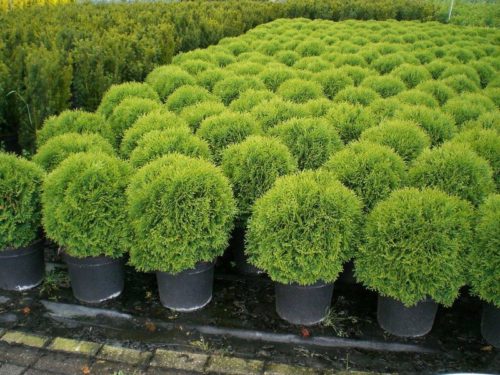
APPLICATION OF TUI
- A variety of varieties and types of Tui make it possible to use a plant in diverse ornamental planting and landscape designs.
- Instances of one variety and size are planted for creating thick living ingots.
- Evergreen plant, Thuja, in addition to its decorative attractive destination, also performs additional functions: protects the area from wind and drafts at any time of the year, refreshes the air with useful phytoncides.
- The healing properties of the Tui, which can have a bloodstand, wound-healing and bactericidal action are also known. A pleasant smell of conifers soothing effectively affects the human nervous system, contributes to the restoration of forces, has a prophylactic effect with ORVI.
- Another, exotic, use of coniferous "Beauty" - the formation of a tree - bonsai. To do this, the throne of the car is constantly cut, and the branches are fixed in the right direction.
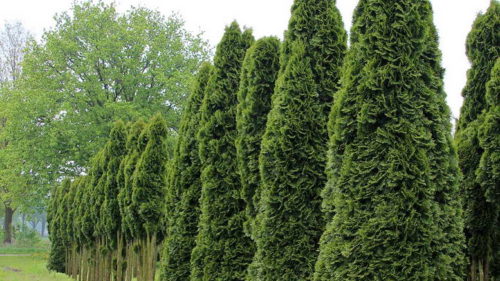
conclusions
- The reproduction of Tui seeds is a cheap and affordable method, as a result of which for 3-4 years it is possible to obtain a large number of viable seedlings.
- Store long collected seeds of Tui is not worth it, as they quickly lose their germination.
- Stratification of seeds is the most important condition for the successful cultivation of Tui from seeds.
- Thuja is unpretentious and overlapping culture, widely used by landscape designers and amateur gardeners.

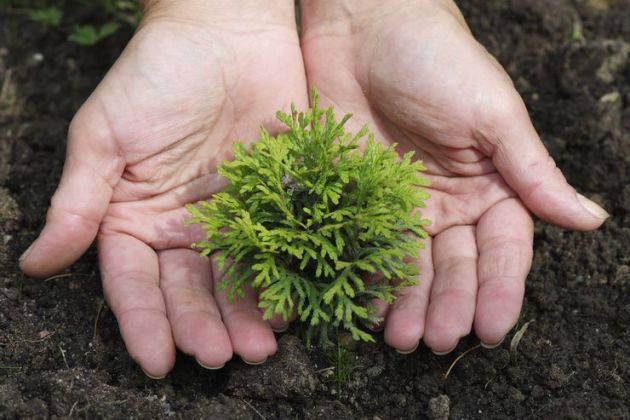
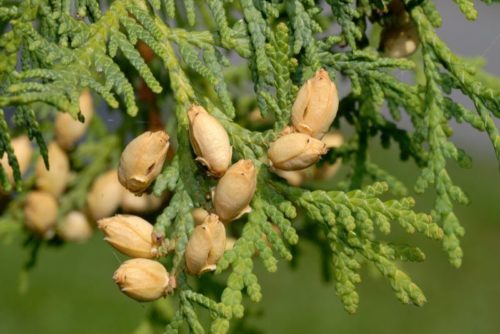
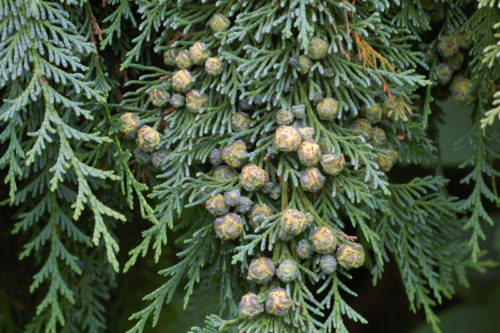
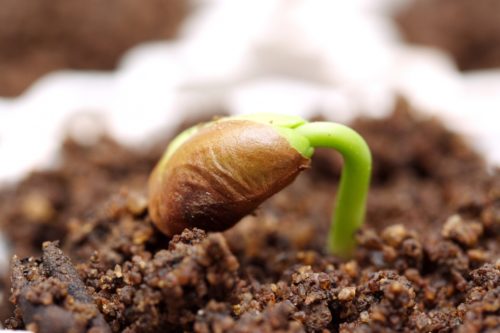
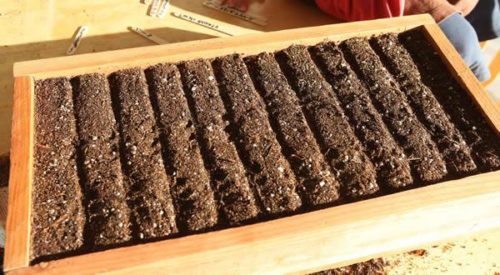
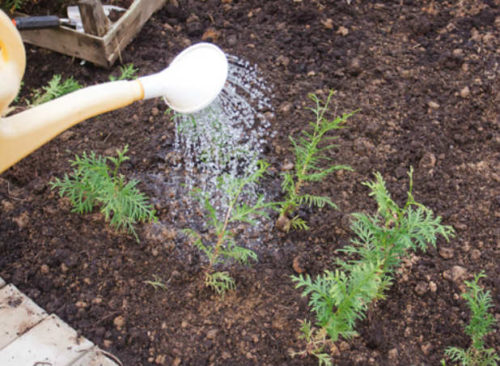
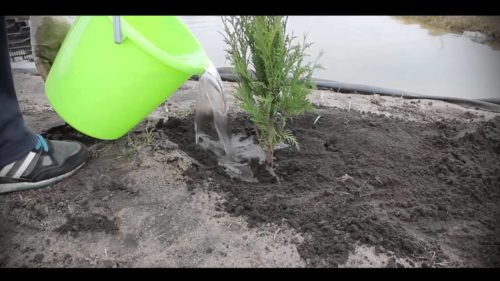
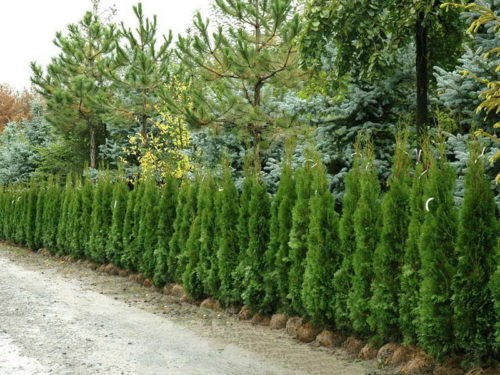
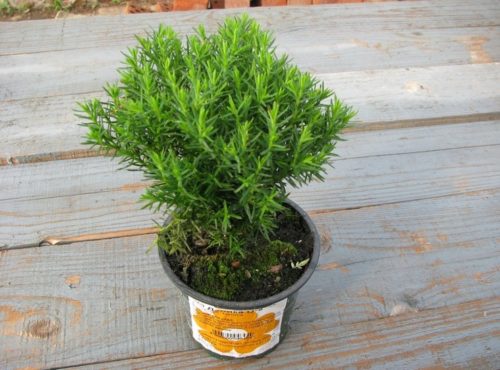












 Start a discussion ...
Start a discussion ...